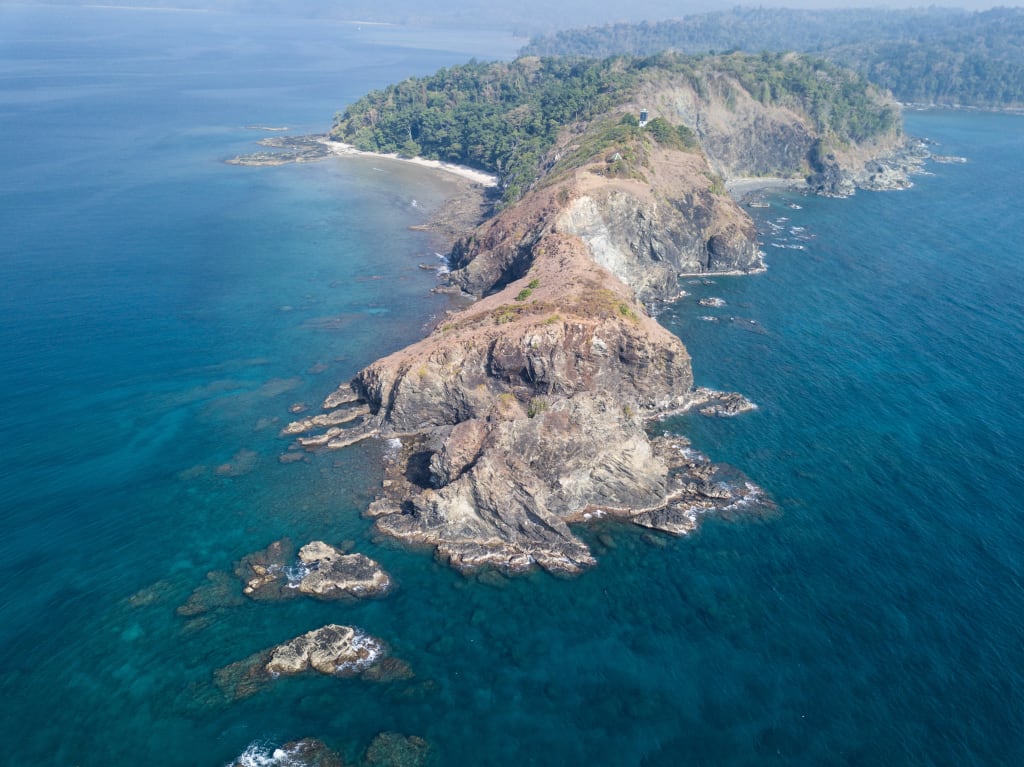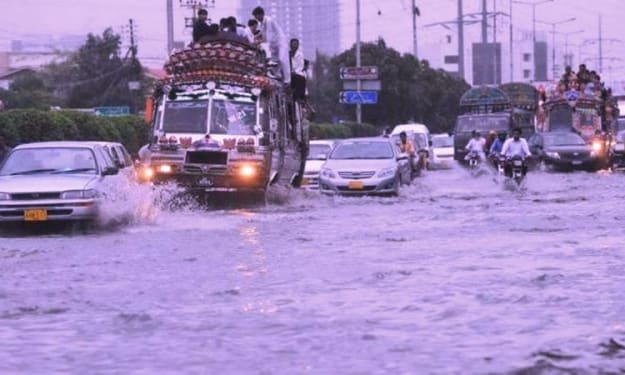Top 10 interesting facts
About life in the Andaman and Nicobar Islands

These are the 10 interesting facts about life in the Andaman and Nicobar Islands, to give you a deeper understanding of this fascinating place.
10 . Sea Turtle Nesting
The Andaman and Nicobar Islands are home to several sea turtle nesting sites, which are protected by the government. The islands are a major nesting ground for the Olive Ridley sea turtle, which is considered an endangered species. The government has set up hatcheries and turtle conservation centers on the islands to protect the turtle population. Visitors to the islands can also visit these hatcheries and centers to learn more about the conservation efforts and see the turtles up close.
9. Strategic Importance
The Andaman and Nicobar Command, India's only tri-service geographical command, is located in the islands. This command was established in 2001 and is responsible for the defense and security of the islands. The command has a significant role in the Indian Armed Forces, and it is responsible for monitoring and safeguarding India's interests in the Bay of Bengal and the Andaman Sea. The command also plays a vital role in disaster management and relief operations in the region. The Indian Navy, Indian Air Force, and Indian Army all have a presence in the Andaman and Nicobar Command.
8. Active Volcano
The islands are home to the only active volcano in India, Barren Island. The volcano is located on a small island of the same name, which is around 135 km (84 mi) from the northeastern coast of South Andaman Island. The volcano is an important site for scientific research, as well as a popular destination for adventure tourists. The last eruption occurred in 2017, and since then the volcano has become a popular spot for volcano trekking and scuba diving.
7. Environmental Protection
The Indian government has implemented strict regulations to protect the islands' unique environment and indigenous communities. These regulations include restrictions on development and logging in certain areas, as well as measures to protect the islands' coral reefs and other sensitive ecosystems. The government has also set up protected areas , such as national parks and wildlife sanctuaries, to conserve the islands' unique biodiversity. Some of the popular protected areas include the Mahatma Gandhi Marine National Park, the Campbell Bay National Park, and the Galathea National Park. The government has also established the Andaman and Nicobar Island Environmental Team (ANET) to oversee the conservation and management of the islands' natural resources.
6. Tsunami Impact
The islands were heavily affected by the 2004 Indian Ocean tsunami, which caused widespread damage and loss of life. The tsunami caused significant damage to the islands' infrastructure, including roads, bridges, and buildings. Many people lost their homes and livelihoods as a result of the disaster. The Indian government has since provided aid and assistance to help the islands recover from the tsunami. The government has also implemented a disaster management plan for the islands to prevent loss of life and property in case of any natural disaster.
5. Economic Diversity
The economy of the islands is primarily based on agriculture, fishing, and tourism. The main agricultural products are rice, coconut, and betel nuts. Fishing is also an important industry, with a variety of fish and shellfish caught in the waters around the islands. Tourism is a rapidly growing sector, with many visitors attracted to the islands' beautiful beaches, coral reefs, and unique culture. The government is also promoting ecotourism in the islands to preserve the natural heritage of the islands.
4. Marine Life
The islands are also a popular destination for scuba diving, snorkeling, and sea turtle nesting. The waters around the islands are known for their rich marine life, including a wide variety of fish, sharks, and dolphins. The islands also have several sea turtle nesting sites, which are protected by the government. Some of the popular diving spots are the Mahatma Gandhi Marine National Park, which is home to more than 150 species of coral, and the Barren Island, which is home to an active volcano.
3. Language Diversity
The official languages spoken on the islands are Bengali and Hindi, but many other languages are also spoken. These include English, Tamil, Telugu, and Malayalam. The islands have a diverse cultural heritage, with influences from different parts of India, as well as Southeast Asia. This linguistic diversity is a reflection of the island's history, as people from different parts of India migrated here over time.
2. Natural Beauty
The Andaman and Nicobar Islands are known for their beautiful beaches, coral reefs, and mangrove forests. The beaches are particularly popular for swimming, sunbathing and water sports, while the coral reefs are a major attraction for scuba diving and snorkeling. The mangrove forests provide a habitat for a wide variety of plant and animal species, including saltwater crocodiles and dugongs. Some of the popular beaches are Radhanagar, Vijaynagar, and Kala Pathar on Havelock Island, and Bharatpur and Laxmanpur on Neil Island.
1. Indigenous Culture
The Andaman and Nicobar Islands are home to a diverse population, including indigenous tribes such as the Great Andamanese, Onge, and Jarwa. These tribes have their own distinct culture, language, and way of life, which is unique to the islands. The Great Andamanese tribes are believed to have been living on the islands for more than 26,000 years, while the Onge and Jarwa tribes have lived there for around 4,000 and 2,000 years respectively. The Indian Government has established the Andaman Adim Janjati Vikas Samiti (AAJVS) to ensure the welfare and development of the tribes. They have also designated certain areas of the islands as "Reserved Forests" where the tribes live and are protected from outside influences.
In summary, the Andaman and Nicobar Islands are a unique and diverse union territory of India, located in the Bay of Bengal. The islands have a rich cultural heritage, with influences from different parts of India, as well as Southeast Asia. The islands are also known for their beautiful beaches, coral reefs, and mangrove forests, which attract many tourists. The economy of the islands is primarily based on agriculture, fishing, and tourism. The islands were heavily affected by the 2004 Indian Ocean tsunami, but have since recovered with the help of the Indian government. The government has also implemented strict regulations to protect the islands' unique environment and indigenous communities. The islands are also home to the only active volcano in India and the Andaman and Nicobar Command, India's only tri-service geographical command. The Andaman and Nicobar Islands are a unique and important part of India, with a rich cultural and natural heritage.
Living in the Andaman and Nicobar Islands can be a unique and fulfilling experience. The islands offer a peaceful and serene environment, with beautiful beaches, lush forests and a rich marine life. The islands are also known for their diverse culture, with influences from different parts of India, as well as Southeast Asia. The local people are friendly and welcoming, and the local cuisine is a mix of Indian and Southeast Asian flavors.
The cost of living in the Andaman and Nicobar Islands is relatively low compared to other parts of India. Basic necessities like food and accommodation are readily available and affordable. Transportation is also relatively cheap and convenient, with both private and government-run buses and ferries available.
The islands have a good healthcare system, with several government and private hospitals and clinics available. There are also several schools and colleges on the islands, providing education to both locals and expats.
The islands are also known for its diverse economy, with agriculture, fishing and tourism being the main sources of income. There are also several opportunities for small business and self-employment.
Overall, living in the Andaman and Nicobar Islands can be a unique and enjoyable experience for those who appreciate nature and a slower pace of life. It's a place where one can experience peace and tranquility and enjoy the natural beauty of the islands.
About the Creator
Onawale Femi
I’m a content writer
Enjoyed the story? Support the Creator.
Subscribe for free to receive all their stories in your feed. You could also pledge your support or give them a one-off tip, letting them know you appreciate their work.





Comments
There are no comments for this story
Be the first to respond and start the conversation.